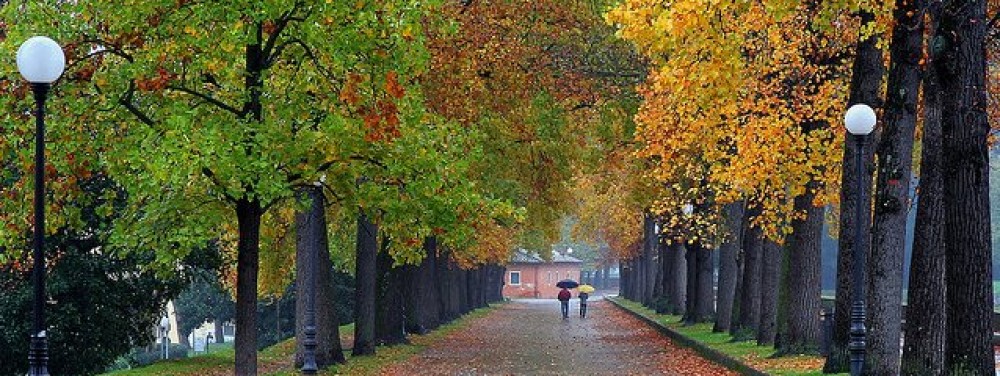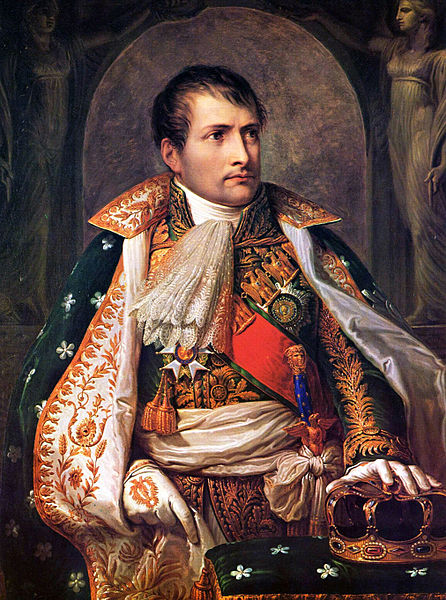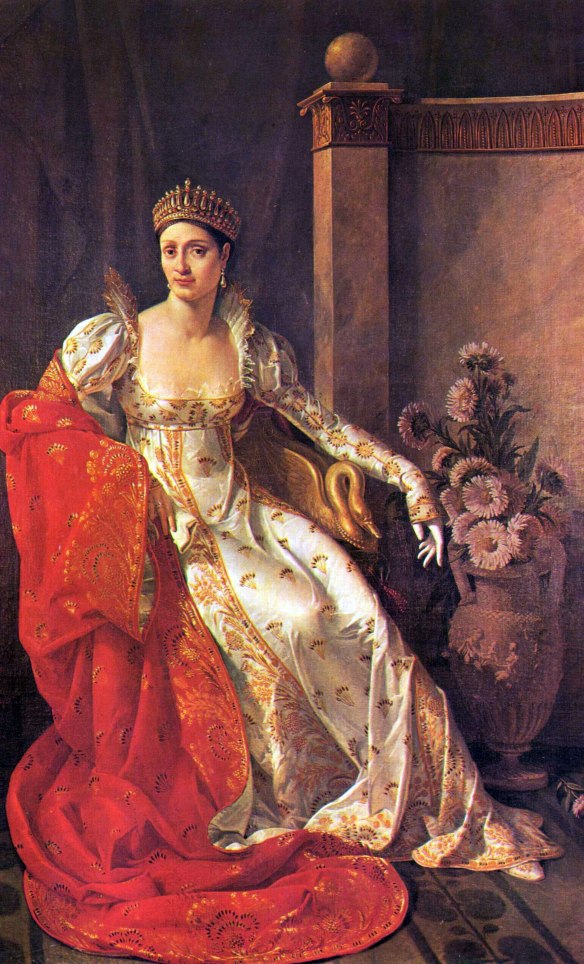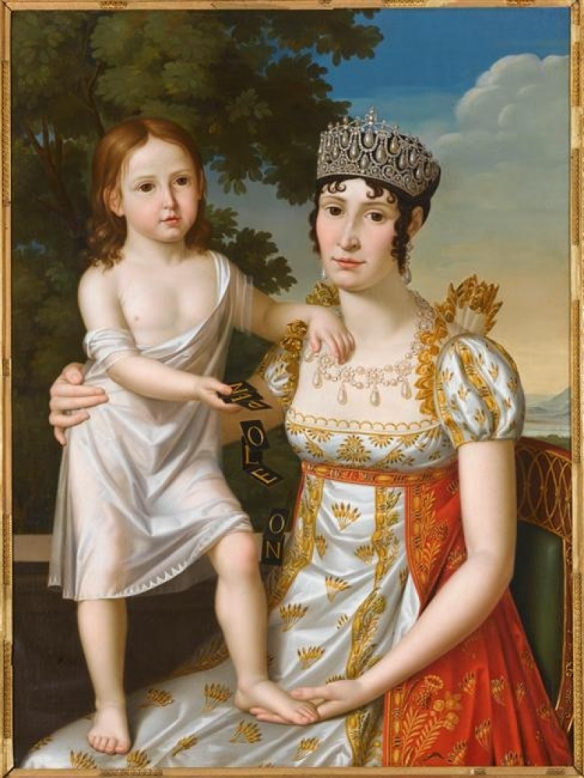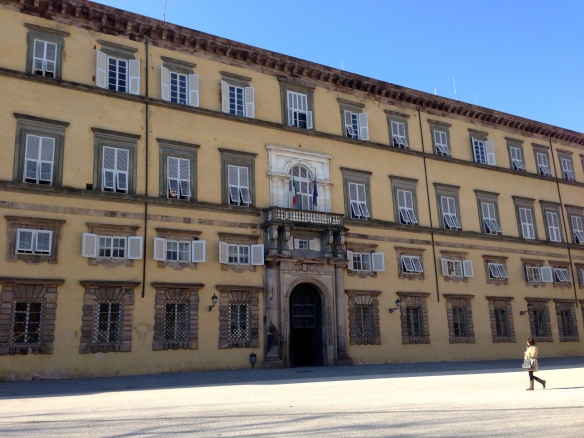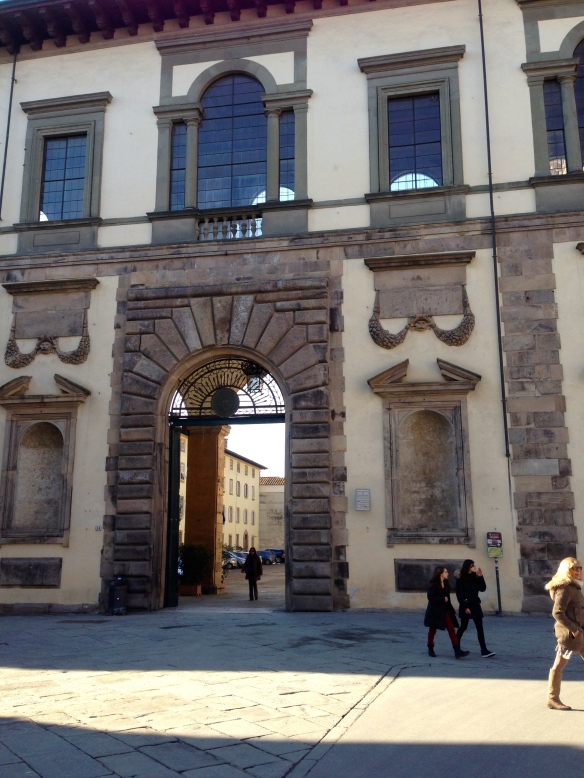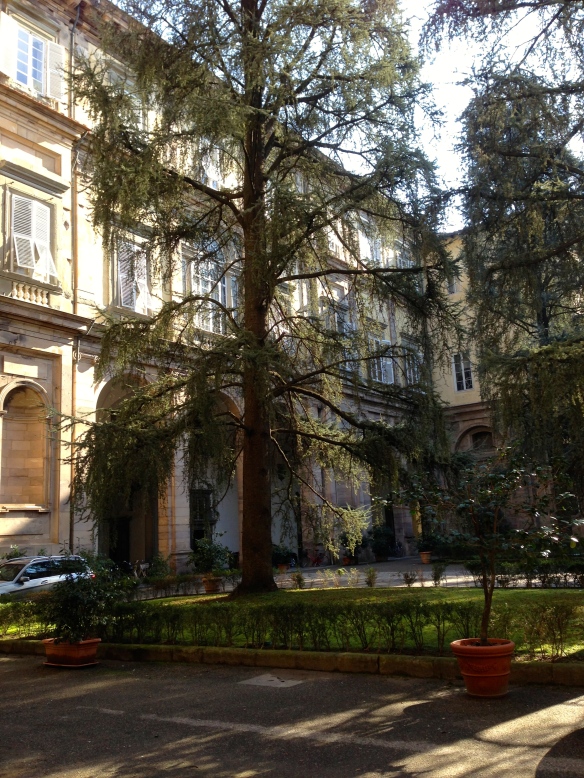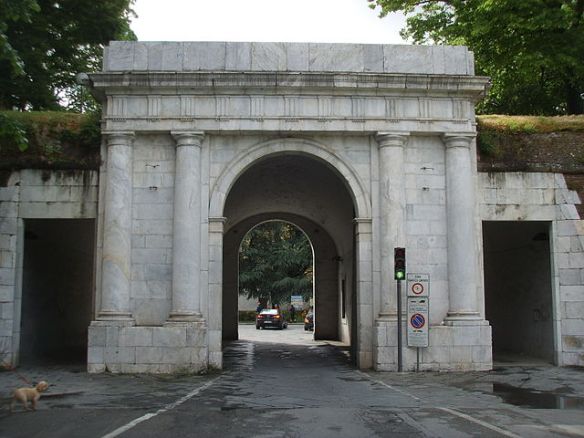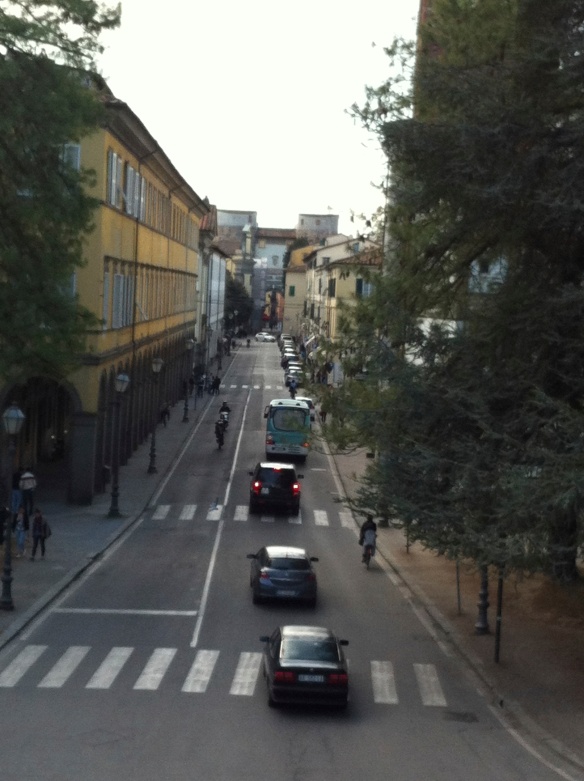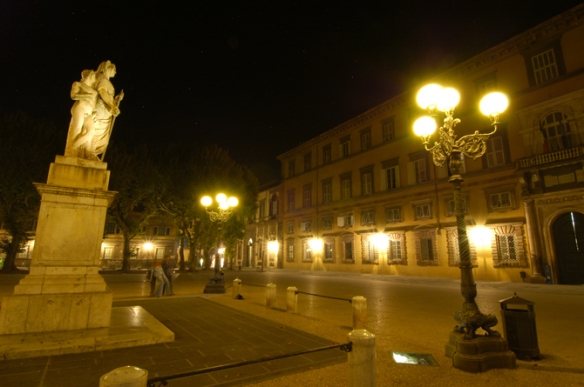I should probably change this title to “When the Lucchesi were supposed to speak French.” In the first part of the 1800s, the Republic of Lucca was occupied by the French, a time in its history that still sticks in the craw of many a Lucchesi. My friend and teacher, Antonella always takes on an odd look when speaking about a time when Lucca was ruled by foreigners. They wouldn’t shake off the French or the Austrians for many years.
It all started when Napoleon Bonaparte was made Emperor in France and looked around for ways to expand his empire. No doubt he was aware of the region of Tuscany in that he was from nearby Elba and Corsica. Napoleon was an emperor with an excess of siblings who all needed jobs. He decided to send a sister, Elisa Bonaparte and her Corsican husband, Felice Pasquale Baciocchi to Lucca, as sovereigns. Napoleon did not hold the region in high regard, referring to it as the “dwarf republic’, so I’m not sure in what regard he held his sister. If being sent to sunny Tuscany was a punishment, then Elisa failed to interpret it as such. Apparently, she took to it quite well.
Elisa assumed a number of important titles; Princess Francaise, Princess of Piombino, Duchess of Lucca and later, Grand Duchess of Tuscany. Her husband went to sea; her brother was busy elsewhere and she and her retinue flourished in Lucca. But, of, course, not without controversy.
Obviously, Elisa and Co. needed a place for her court and luckily she found a grand palazzo available. Unfortunately, it was too small to set up a real French court and at the time, the palazzo was surrounded by a neighborhood with an old church. No problem. The blocks were razed, the Church of San Pietro with its venerated Madonna, demolished and a grander piazza was built in the French style. Lucca was horrified. It’s no wonder that the Lucchesi referred to her as ‘That Woman’ or La Madame.
The area in front of the Palazzo Ducale was planted with trees and was, and still is, a very wide-open space, made to look more like Paris than Lucca. The trees here now are not the originals, but these are definitely very old. Now, the area is called alternatively, Piazza Grande or Piazza Napoleone, depending on who’s doing the talking.
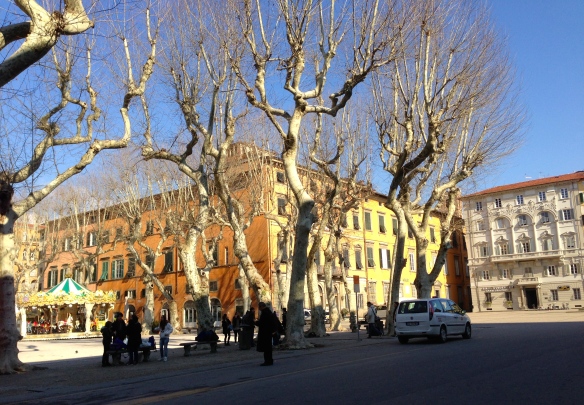
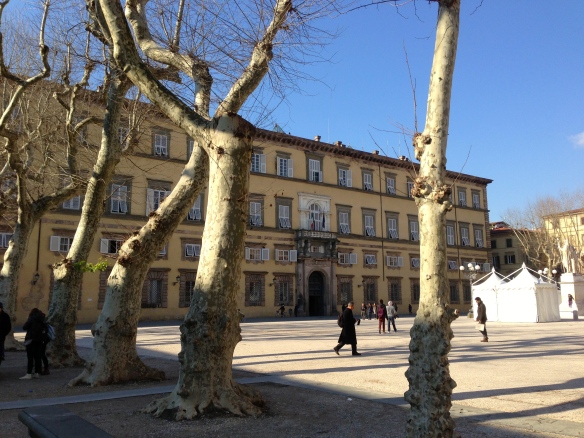
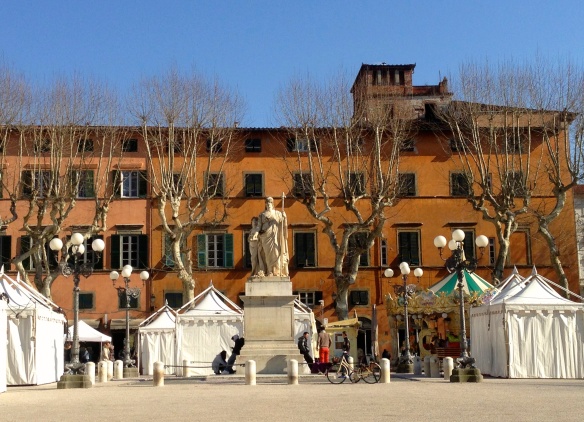 The piazza is always a busy place. There is a beautiful carousel and many cafes and shops. In the winter, this was the site of the outdoor skating rink and in the summer, the location hosts the very popular outdoor concert series.
The piazza is always a busy place. There is a beautiful carousel and many cafes and shops. In the winter, this was the site of the outdoor skating rink and in the summer, the location hosts the very popular outdoor concert series.
Elisa instituted many reforms and changes, many needed, during her reign in Lucca. Probably the most controversial was the creation of a new gateway in the renaissance walls. By the time she arrived, the constant conflicts between Lucca and its neighbors were in the past, so the wall was no longer needed to protect the citizens from armed invaders. Even so, to breach the walls was highly symbolic to the people of Lucca, and not in a good way. Elisa opened the wall on the Florence side and built a broad street into the center of town. Via Elisa and many of the buildings along it are oddities in Lucca. On one side, there is a large building with a vaulted portico, another feature never before seen in Lucca. Porta Elisa is the only one of the wall gateways built of marble; all the others are of red brick.
In 1815, the Congress of Vienna assigned Lucca to the Bourbon dukes of Parma, who ruled until 1847. Elisa was forced leave her beloved Lucca, but in a few years, she had left her mark on a city that had been around since Caesar and Pompey. Piazza Napoleone at night is proof of that.
